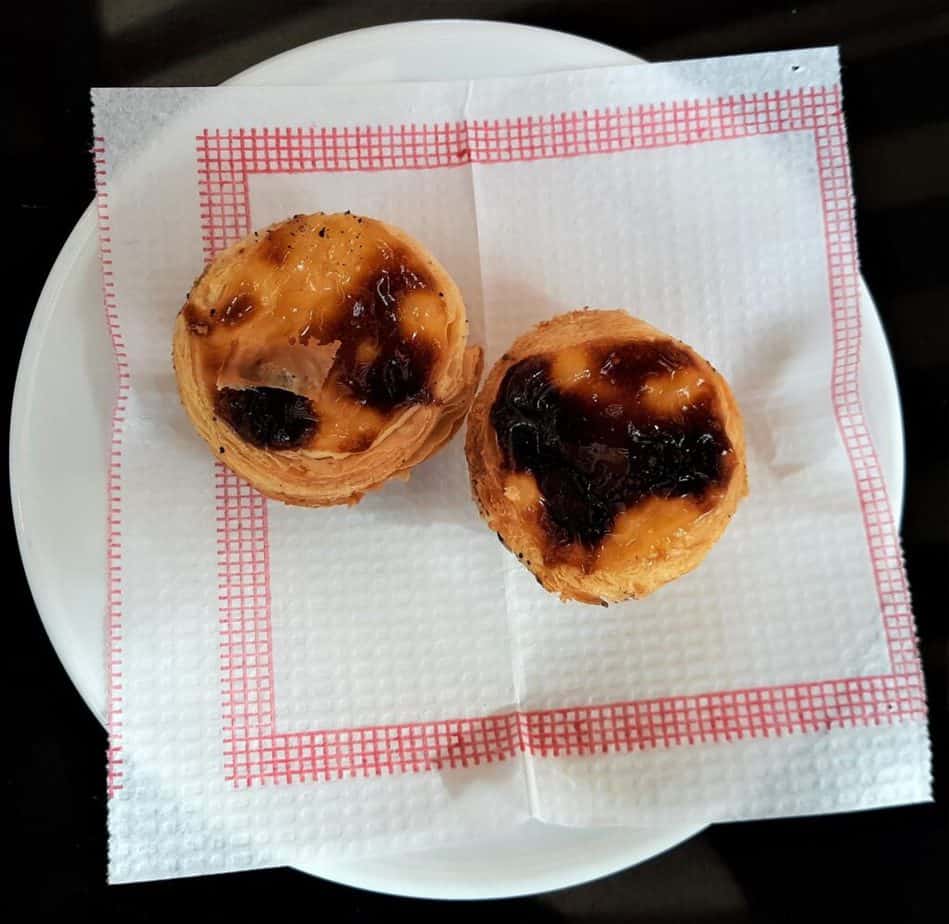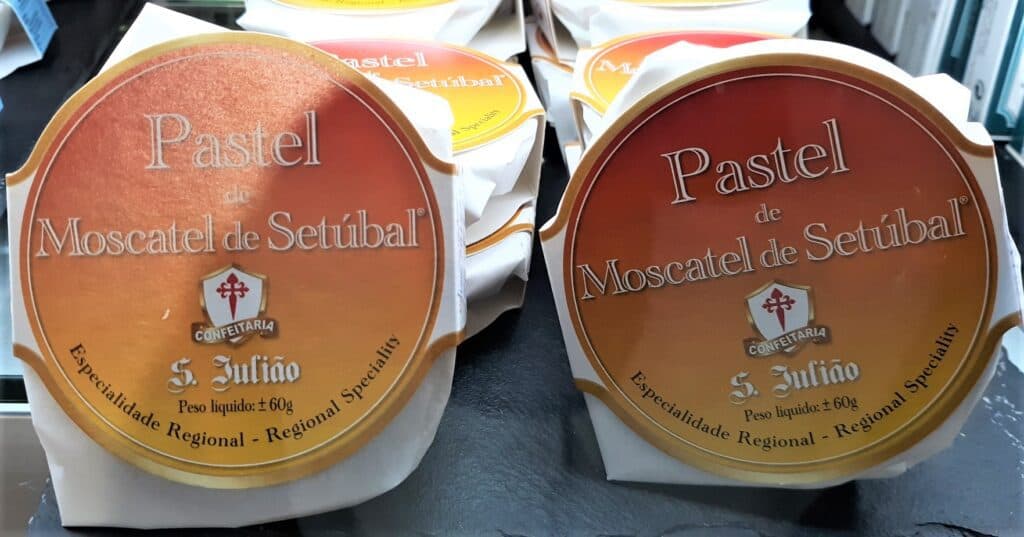A pastry chef in Palmela, Portugal has created a new pastry that incorporates one of the region’s most famous products.
Pastel de Nata origin story
The story goes that Monks at Jerónimos Monastery in the Belem neighborhood of Lisbon used egg whites to starch their habits and, as a result, had lots of egg yolks left over. Starting in the 18th century, the monks used the leftover egg yolks to make a creamy, custard-like pastry, the Pastel de Nata. When the monastery was closed by the government, the monks sold the recipe to a local sugar refinery. The owners of the refinery opened a bakery, Fábrica de Pastéis de Belém, in 1837. That bakery is still churning out delicious custard tarts to this day and is run by descendants of the first owners.
Where to get Pastel de Nata
While the original bakery, Pastéis de Belém, is the only one legally allowed to sell the pastry called Pastéis de Belém, the Pastel de Nata is sold at virtually every bakery throughout Portugal.

My favorite place for a Pastel de Nata is Lisbon is at Pastelaria Santo António. They have a great atmosphere with a tile mural of St. Anthony on the wall. Wait for a tray of Pastel de Nata to come out of the oven and get a hot one! Manteigaria also makes a fine custard tart.
If you’re vegan, Vegan Nata makes a fully plant-based Pastel de Nata.
About 40 minutes by car from Lisbon is where, in my opinion, you’ll get the best Pastel de Nata in Portugal. Pastelaria Capri on Largo da Misericórdia in Setubal makes adorable mini Pastel de Nata. Since they’re small, you get more crispy, flaky crust in every bite. And, for me, the crust is what makes a great Pastel de Nata.

Moscatel de Setubal
The region of Setubal is famous for several things. World-class beaches, sailing, fascinating museums and history, and food.
Chief among its gastronomic delights is Moscatel de Setubal, a fortified wine made in the region. Muscat of Alexandria and Moscatel Roxo are the primary grapes used in Moscatel. When tasting Moscatel, you’ll notice they become richer, with caramel and raisin notes as they age. While Moscatel can be drunk young, the best are aged at least 10-14 years. My favorite way to enjoy Moscatel is at the end of a meal with something sweet like dark chocolate, though some foodies will tell you to pair it with something savory to get a nice contrast.

Pastel de Moscatel de Setubal
With the popularity of Moscatel in Setubal, it’s surprising that no one thought of adding it to the creamy custard tart of Portugal, the Pastel de Nata. But, it was only recently that Confeitaria São Julião started making the Pastel de Moscatel de Setubal.

The yummy pastry was already perfect, but adding a hint of sweet Moscatel elevates the treat.
Since almonds are also added, the filling is more like a rich, moist cake than a custard. Still, there are lots of eggs in the recipe!
You can get the Pastel de Moscatel de Setubal at several shops in Setubal like the Casa de Baia or the cafe in Forte de São Filipe. However, I must point out that the pastries are made nearby in Confeitaria São Julião and, therefore, are not coming fresh out of the oven. While they are a delightful treat, since they have been shipped and are sitting for a bit, the crust will never be as flaky as it would be straight from the oven.
About the Author

Brent Petersen is the Editor-in-Chief of Destination Eat Drink. He currently resides in Setubal, Portugal. Brent has written the novel “Truffle Hunt” (Eckhartz Press) and the short story collection “That Bird.” He’s also written dozens of foodie travel guides to cities around the world on Destination Eat Drink, including in-depth eating and drinking guides to Lisbon, Porto, Sintra, Monsaraz, and Evora in Portugal. Brent’s podcast, also called Destination Eat Drink, is available on all major podcasting platforms and is distributed by the Radio Misfits Podcast Network.
